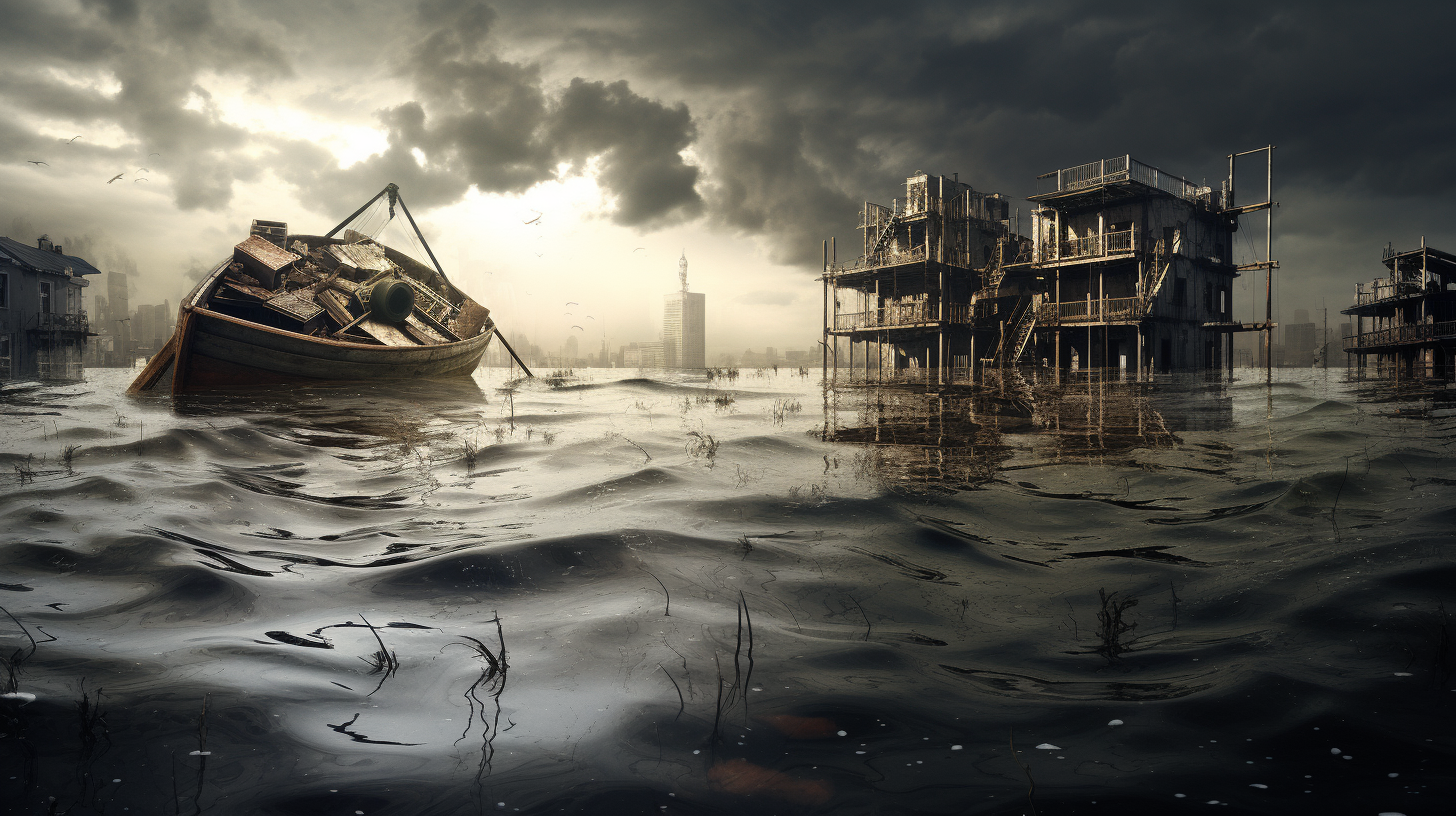In an era where the aqua apocalypse lingers at every coastline and rivers swell like the bellies of starved beasts ready to consume the land, our world teeters on the brink of a deluged dystopia. As city after city succumbs to the seething surge of unrelenting tides, the narrative of "Flooded Futures and the Ark that Never Arrived" unfolds—a siren call to humankind ignored, a covenant with nature defiled, and a desperate search for an escape from the rising embrace of the abyss.
The catastrophe hit us not with the fury of a sudden apocalypse, but with the relentless gradualism worthy of water’s wearing whisper; it was a slow-motion cataclysm that crept into our lives, flooding the basement of complacency before submerging the ground floor of reaction. Stories abound of once-thriving metropolises now coughing, spluttering, and gasping for air under the weight of the water’s wrath. Coastal cities, once beacons of progress and prosperity, now stand as modern-day Atlantises—sunk beneath waves of indifference and inaction.
Embark on a journey with us through the inundated avenues of this waterlogged wasteland. Picture neighborhoods where swings in playgrounds sway not in the breeze but in the currents of the new waterworld, where traffic lights blink their indifferent reds and greens, submerged and unheeded. Venture into the newfound domain of marine life, which has claimed urban territories as their newfound reefs, cars transformed into artificial corals, skyscrapers turned into towering islands amid a sea without end.
And as we navigate this watery grave of human hubris, the question looms like an overbearing cloudburst: where is the Ark—the vessel of salvation, the beacon of hope that was supposed to rise with the flood and ensure survival? The conceit of modernity, it seems, was to believe that technology, like a deus ex machina, would descend to whisk us from the wet brink. Instead, we are left with the Ark that Never Arrived: the plans, promises, and prototypes that dissolved in the very waters they were meant to defy.
Desperate hands cling to the rafts of resilience and adaptation. Decades of environmental warnings, painted vividly in data and demonstrations, now resonate with haunting prescience. We float on in the hope of finding dry land, an elusive shore of sustainability and balance that we once walked upon without care or covenant.
Our tale is not one of simple sorrow and lament. It is a trumpet call for those who will listen, a chanty for charting new courses in this aqueous anarchy. It speaks of communities creating lifeboats of local action, of cities drafting blueprints for buoyancy, and of societies learning the lore of the land they once neglected. Here lies a silver lining in the storm clouds, an opportunity to stitch a patchwork quilt of ingenuity over our drenched world.
In a future claimed by floods, perhaps it is not the Ark we should seek, but rather the wisdom to live with the waters, embracing their ebb and flow, learning anew what it means to coexist with the earth’s most vital and volatile element—water. It beckons us to remember and revive the ancient arts of living with nature, not against it, to reweave the tapestry of ecological equilibrium before the remnants of our terrestrial tapestries are irretrievably lost at sea.
For the floodwaters are not merely a substance; they are a symbol—a reflection of our own making. The future, though flooded, is not yet written in stone, nor is it fated to be written upon water’s fleeting surface. It is a future we must author with the pen of immediate, impactful action and the ink of unwavering resolve.
Let us bear witness to the Flooded Futures, not as passive observers of our own demise, but as active participants in a narrative of redemption and renewal. The Ark that Never Arrived can morph from myth into a mosaic of innovative initiatives and proactive changes, cementing the legacy of humanity as one of adaptation and awe for the natural world that cradles us.
